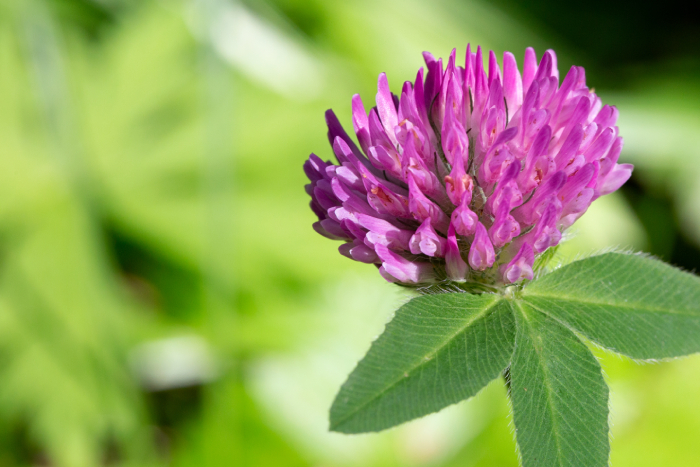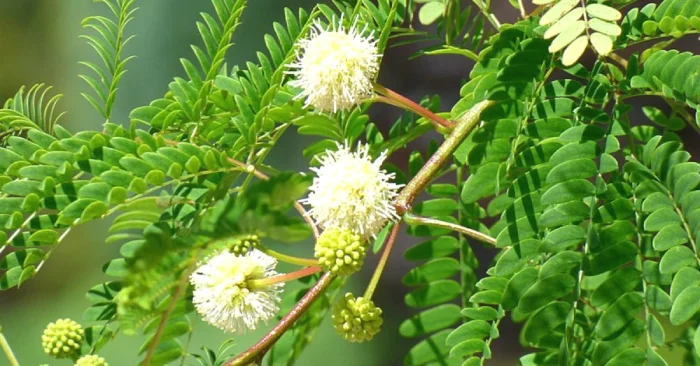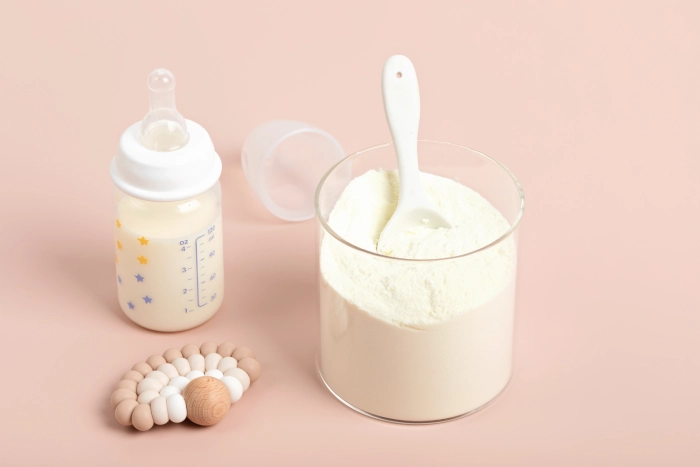Hey there, wellness warriors and green-thumbed gurus! Today, we’re diving deep into the world of a little botanical marvel that’s been causing quite a stir in health circles. That’s right, we’re talking about red clover seed! This tiny titan isn’t just another pretty face in the meadow; it’s a nutritional powerhouse that’s been quietly revolutionizing the way we think about natural health. So, grab your favorite mug (maybe filled with some red clover tea?), and let’s explore why this humble seed is the talk of the town!
What’s All the Fuss About Red Clover Seed?
Let’s start with the basics, shall we? Red clover seed comes from the red clover plant, a species that’s been hanging around for centuries but is only now getting its moment in the spotlight. Picture this: a lush field dotted with vibrant purple-pink flowers swaying in the breeze. That’s the red clover plant in all its glory! But don’t let its delicate appearance fool you – this plant is as tough as nails and packed with goodness.
Now, you might be wondering, “Is red clover edible?” Well, buckle up, buttercup, because not only is it edible, but it’s also downright delicious and nutritious! From the leaves to the flowers, and yes, those precious red clover seeds, every part of this plant has something to offer. But today, we’re putting those tiny seeds under the microscope.
The Magic Within: What Makes Red Clover Seed Special?
Alright, time for a quick science lesson (don’t worry, I promise to keep it fun!). Red clover seed is like nature’s multivitamin. It’s loaded with isoflavones, which are plant compounds that act like estrogen in our bodies. But that’s not all – these seeds are also rich in vitamins, minerals, and antioxidants. It’s like Mother Nature packed a whole health food store into one tiny package!
But here’s where it gets really interesting. The red clover species has been used for centuries in traditional medicine. From Native American healers to European herbalists, this plant has been a go-to remedy for all sorts of ailments. And now, modern science is catching up, with studies exploring the potential benefits of red clover for everything from menopause symptoms to heart health.
Red Clover Benefits: More Than Just a Pretty Face
Let’s talk about why you might want to make red clover your new BFF. First up, red clover benefits for skin. If you’re dreaming of that dewy, glowing complexion, red clover might be your secret weapon. Its anti-inflammatory properties can help calm irritated skin, while its antioxidants fight off those pesky free radicals that cause premature aging. Who needs expensive creams when nature’s got your back?
But wait, there’s more! Red clover benefits for hair are equally impressive. If you’re battling thinning locks or just want to add some oomph to your mane, red clover extract for hair might be worth a try. It’s believed to improve circulation to the scalp, potentially promoting hair growth and strength. Hello, luscious locks!
And let’s not forget about the internal benefits. Red clover has been studied for its potential to support heart health, bone density, and even hormone balance. Some folks swear by red clover for fertility, though the jury’s still out on that one scientifically. But hey, a little extra nutrition never hurt anyone trying to boost their baby-making odds, right?
How to Get Your Red Clover Fix

Now that you’re all excited about red clover seed (I can practically see you bouncing in your seat!), you’re probably wondering how to get your hands on this miracle plant. Well, you’ve got options, my friend!
- Grow Your Own: Planting red clover is a great way to ensure a fresh supply. Plus, it’s pretty easy to grow. When to plant red clover? Spring or fall are your best bets, depending on your climate. Just scatter those seeds and watch the magic happen!
- Brew It Up: How to make red clover tea? It’s a breeze! Just steep some dried red clover flowers or leaves in hot water for about 10 minutes. Voila! A soothing, nutritious beverage at your fingertips.
- Supplement Savvy: For those who want a more concentrated dose, the best red clover supplement might be the way to go. Look for high-quality brands that use organic ingredients.
- Oil It Up: Red clover oil is another fantastic option, especially for topical use. It’s great for massages or as a skin treatment.
- Powder Power: Red clover powder can be easily added to smoothies, yogurt, or baked goods for a nutritional boost.
The Versatility of Red Clover: From Tea to Tincture
One of the coolest things about red clover is its versatility. Tea with red clover is probably the most popular way to consume it, but that’s just the tip of the iceberg. Red clover tincture is another potent option, offering a concentrated form of the plant’s benefits. And for those who love to experiment in the kitchen, dried red clover can be sprinkled on salads or used as a garnish.
But here’s a fun fact that’ll blow your mind: red clover isn’t just for humans! If you’re into gardening or farming, you might be interested to know that planting red clover can actually improve soil quality. It’s what’s called a “nitrogen-fixing” plant, which means it helps put nutrients back into the soil. Talk about a multi-tasker!
Red Clover: Perennial Powerhouse or Annual Wonder?
Now, let’s address a burning question: is red clover perennial? The answer is yes! Red clover is indeed a perennial plant, meaning it comes back year after year. This is great news for gardeners and foragers alike. Once you’ve got a patch established, you can look forward to a steady supply of this nutritional powerhouse.
But here’s the kicker – while the plant itself is perennial, individual plants typically live for about two to three years. So if you’re planning on growing your own, you might want to reseed every few years to keep your patch thriving. It’s like having a self-renewing health supplement right in your backyard!
Red Clover for Specific Health Concerns
Now, let’s get down to the nitty-gritty. Red clover has been studied for its potential benefits in several specific health areas. Here’s the scoop:
- Red Clover for Cancer: Some studies have looked at red clover’s potential role in cancer prevention, particularly for hormone-sensitive cancers. While the research is still ongoing, the antioxidants in red clover may help protect cells from damage.
- Red Clover for Fibroids: Due to its phytoestrogen content, some women use red clover to help manage symptoms associated with uterine fibroids. However, it’s crucial to consult with a healthcare provider before using any herbal remedy for this condition.
- Red Clover and Fertility: As mentioned earlier, some folks swear by red clover tea and fertility benefits. While there’s no concrete scientific evidence, the nutrient-rich profile of red clover could potentially support overall reproductive health.
- Red Clover for Hair Growth: The high vitamin and mineral content of red clover, particularly its iron content, may support healthy hair growth. Some people use red clover oil or tea as a hair rinse for this purpose.
But Wait, There’s More! Addressing Common Concerns
Now, I know what some of you might be thinking. “Sounds great, but does red clover cause weight gain?” Well, I’ve got good news for you, weight-watchers! There’s no evidence to suggest that red clover causes weight gain. In fact, some people even use it as part of their weight management routine due to its nutrient density and potential metabolism-boosting properties.
Another common question is, “Can you eat red clover raw?” The answer is yes! Red clover leaves and flowers are perfectly safe to eat raw. They make a great addition to salads or can be used as a garnish. Just make sure you’re harvesting from a clean, pesticide-free area.
Where to Buy Red Clover: Your Shopping Guide
Alright, so you’re sold on the benefits of red clover and you’re ready to give it a try. But where to buy red clover? Don’t worry, I’ve got you covered!
- Health Food Stores: Most well-stocked health food stores carry red clover in various forms – seeds, dried flowers, teas, and supplements.
- Online Retailers: Websites like Amazon, iHerb, and Mountain Rose Herbs offer a wide variety of red clover products.
- Local Herb Shops: If you’re lucky enough to have a local herbalist or herb shop in your area, they’re likely to carry high-quality red clover products.
- Farmers Markets: During the growing season, you might find fresh red clover at your local farmers market. It’s a great way to support local growers and get the freshest product possible.
- Garden Centers: If you’re interested in growing your own, many garden centers and nurseries sell red clover seeds or seedlings.
How to Grow Red Clover: Your Green Thumb Guide

For those of you itching to get your hands dirty, let’s talk about how to grow red clover. First things first, choose a spot with full sun to partial shade. Red clover isn’t too picky about soil, but it prefers well-draining earth with a pH between 6.0 and 7.0.
When it comes to planting red clover, timing is key. Early spring or late summer/early fall are ideal. Scatter the red clover seeds on the surface of the soil – no need to bury them deep. Just lightly rake them in and keep the area moist until germination. Before you know it, you’ll have a thriving patch of red clover!
Here’s a quick step-by-step guide:
- Prepare the soil by loosening it with a rake.
- Scatter the red clover seeds evenly over the area.
- Lightly rake the seeds into the top 1/4 inch of soil.
- Water gently and keep the soil moist until germination (usually 7-10 days).
- Once established, red clover is fairly drought-tolerant but appreciates regular watering.
Remember, red clover makes a great companion plant in your garden. It attracts beneficial insects and helps improve soil quality. Win-win!
Types of Red Clover: Not All Clovers Are Created Equal
Did you know there are different varieties of red clover? Yep, it’s not just a one-size-fits-all situation. Here are some common types:
- Medium Red Clover: This is the most common type, often used for grazing and hay production.
- Mammoth Red Clover: As the name suggests, this variety grows taller and is often used for green manure.
- Zigzag Clover: This variety has a unique growth pattern and is great for erosion control.
Each type has its own unique characteristics, so if you’re planning on growing red clover, consider which variety might best suit your needs.
Red Clover Essential Oil: A Concentrated Dose of Goodness
We’ve talked about red clover tea, tinctures, and supplements, but let’s not forget about red clover essential oil. This concentrated form of red clover is packed with potential benefits, especially for skin and hair care.
To use red clover essential oil, always dilute it with a carrier oil like jojoba or coconut oil. You can add a few drops to your moisturizer for a skin-boosting treat, or mix it into your shampoo for potential hair growth benefits. Just remember, a little goes a long way with essential oils!
Red Clover Brewing: Beyond Basic Tea

While we’ve mentioned red clover tea, let’s dive a bit deeper into red clover brewing. There are actually several ways to enjoy this herb in liquid form:
- Hot Infusion: This is your basic tea. Steep dried red clover flowers in hot water for 10-15 minutes.
- Cold Brew: For a refreshing summer drink, try cold brewing red clover overnight in the fridge.
- Red Clover Latte: Mix red clover tea with your favorite milk and a touch of honey for a cozy, health-boosting beverage.
- Red Clover Kombucha: For the adventurous brewers out there, try adding red clover to your kombucha for a unique flavor and added benefits.
Remember, when it comes to red clover brewing, the sky’s the limit. Get creative and find your favorite way to enjoy this versatile herb!
Red Clover for Hormonal Balance: A Natural Approach
One area where red clover seed really shines is in supporting hormonal balance, especially for women going through menopause. The isoflavones in red clover act as phytoestrogens, which may help alleviate some symptoms of menopause like hot flashes and night sweats.
But it’s not just for menopausal women. Red clover may also help balance hormones throughout a woman’s life cycle, potentially easing PMS symptoms and supporting overall reproductive health. As always, it’s important to consult with a healthcare provider before starting any new supplement regimen, especially when it comes to hormonal health.
Red Clover Leaf Plant: More Than Just Seeds
While we’ve been focusing on red clover seed, let’s not forget about the red clover leaf plant. The leaves are equally packed with nutrients and can be used in many of the same ways as the seeds and flowers.
Red clover leaves are rich in vitamins and minerals, including calcium, chromium, magnesium, niacin, phosphorus, potassium, and thiamine. They can be eaten fresh in salads, cooked like spinach, or dried for tea. Some people even juice red clover leaves for a nutrient-packed green drink!
Is Red Clover Safe? Addressing Potential Concerns
With all this talk about the benefits of red clover seed, you might be wondering, “Is it safe for everyone?” Generally, red clover is considered safe for most people when used in moderation. However, there are a few things to keep in mind:
- Pregnancy and Breastfeeding: Due to its estrogenic effects, red clover is not recommended for pregnant or breastfeeding women.
- Hormone-Sensitive Conditions: If you have a condition that’s sensitive to hormones (like certain types of breast cancer), consult your doctor before using red clover.
- Blood Thinning Medications: Red clover may interact with blood thinners, so check with your healthcare provider if you’re on these medications.
- Allergies: If you’re allergic to other plants in the legume family, you might also be allergic to red clover.
As with any new supplement or herb, it’s always best to start with a small amount and see how your body reacts. And of course, always consult with a healthcare professional before starting any new health regimen.
Red Clover in Your Kitchen: Culinary Adventures
We’ve talked a lot about the medicinal uses of red clover seed, but let’s not forget that it can be a delicious addition to your culinary adventures too! Here are some fun ways to incorporate red clover into your cooking:
- Red Clover Syrup: Infuse red clover flowers in a simple syrup for a unique sweetener.
- Red Clover Salad: Toss fresh red clover flowers and leaves into your favorite salad for a nutritional boost.
- Red Clover Pesto: Replace some of the basil in your favorite pesto recipe with red clover leaves for a unique twist.
- Red Clover Smoothie: Add some dried red clover to your morning smoothie for an extra health kick.
Remember, when foraging for red clover, make sure you’re picking from areas that haven’t been treated with pesticides or herbicides. And if you’re not sure, stick to cultivated red clover from your garden or reputable suppliers.
The Future of Red Clover Research
As interest in natural health solutions continues to grow, so does research into the potential benefits of plants like red clover. Scientists are currently exploring red clover’s effects on various aspects of health, including:
- Bone Health: Some studies suggest that red clover’s isoflavones might help maintain bone density, particularly in postmenopausal women.
- Cardiovascular Health: Preliminary research indicates that red clover might have a positive effect on blood lipid levels.
- Skin Health: The antioxidants in red clover are being studied for their potential anti-aging effects on the skin.
- Prostate Health: Some research is looking into whether red clover might support prostate health in men.
While much of this research is still in early stages, it’s exciting to think about the potential future applications of this humble plant. Who knows what other benefits we might discover in the coming years?
Wrapping It Up: The Red Clover Revolution
So there you have it, folks – the lowdown on red clover seed and all its amazing potential. From its skin-boosting properties to its possible effects on hormonal balance, this tiny seed is proving to be a true powerhouse in the world of natural health.
Whether you’re brewing up a cup of red clover tea, sprinkling the flowers on your salad, or planting a patch in your garden, there are so many ways to incorporate this versatile plant into your life. And with ongoing research revealing more potential benefits, it seems like the red clover revolution is just getting started.
Remember, while red clover is generally safe for most people, it’s always wise to consult with a healthcare professional before starting any new supplement regimen. After all, your health journey is as unique as you are!
So, are you ready to join the red clover revolution? Whether you’re a seasoned herbalist or a curious newbie, there’s never been a better time to explore the world of red clover seed. Who knows? This little seed might just be the missing piece in your wellness puzzle!



